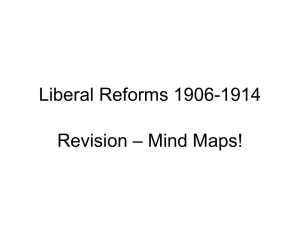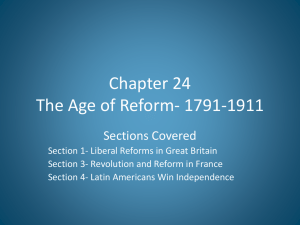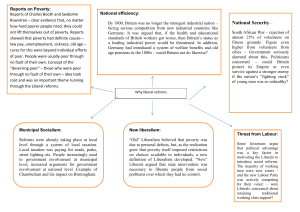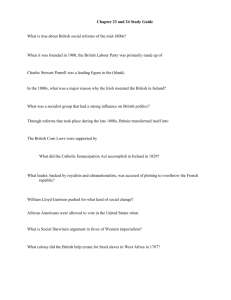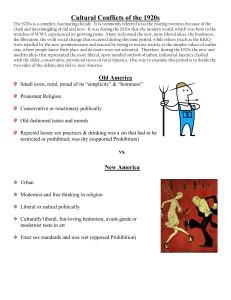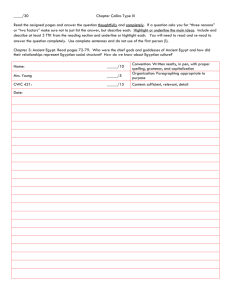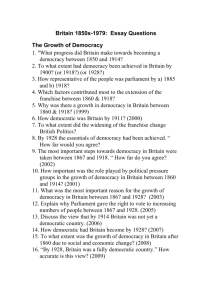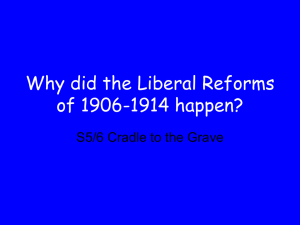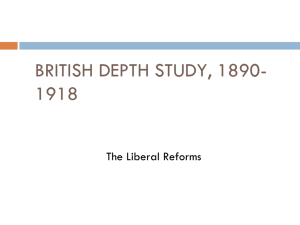Essay 1: How democratic was Britain by 1918
advertisement
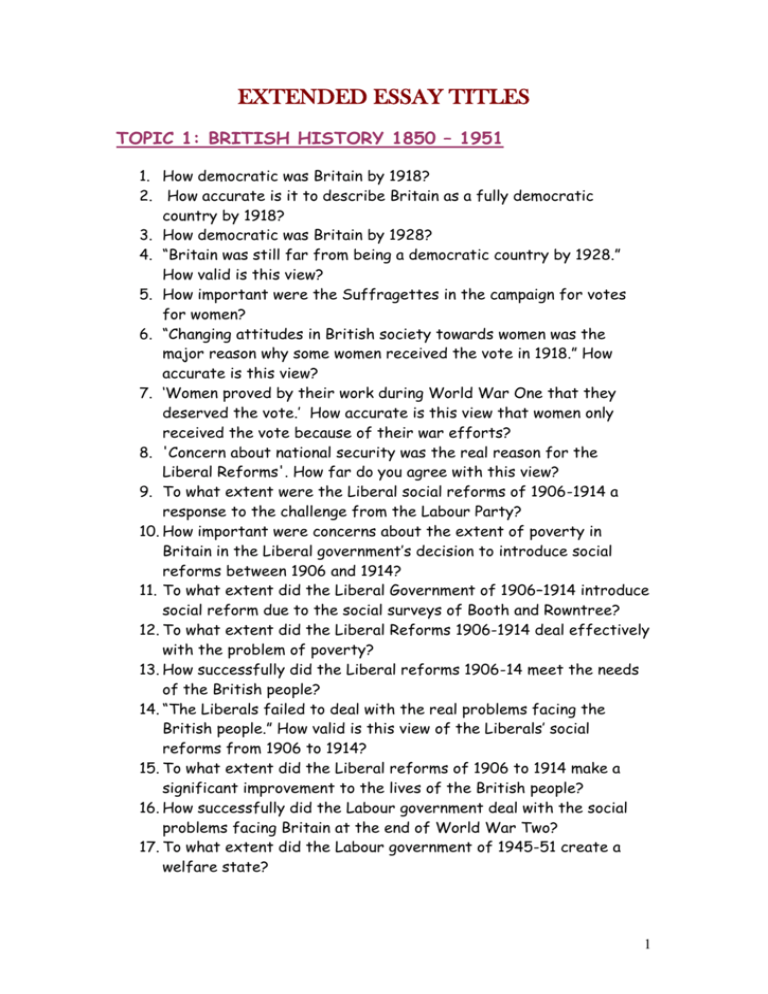
EXTENDED ESSAY TITLES TOPIC 1: BRITISH HISTORY 1850 – 1951 1. How democratic was Britain by 1918? 2. How accurate is it to describe Britain as a fully democratic country by 1918? 3. How democratic was Britain by 1928? 4. “Britain was still far from being a democratic country by 1928.” How valid is this view? 5. How important were the Suffragettes in the campaign for votes for women? 6. “Changing attitudes in British society towards women was the major reason why some women received the vote in 1918.” How accurate is this view? 7. ‘Women proved by their work during World War One that they deserved the vote.’ How accurate is this view that women only received the vote because of their war efforts? 8. 'Concern about national security was the real reason for the Liberal Reforms'. How far do you agree with this view? 9. To what extent were the Liberal social reforms of 1906-1914 a response to the challenge from the Labour Party? 10. How important were concerns about the extent of poverty in Britain in the Liberal government’s decision to introduce social reforms between 1906 and 1914? 11. To what extent did the Liberal Government of 1906–1914 introduce social reform due to the social surveys of Booth and Rowntree? 12. To what extent did the Liberal Reforms 1906-1914 deal effectively with the problem of poverty? 13. How successfully did the Liberal reforms 1906-14 meet the needs of the British people? 14. “The Liberals failed to deal with the real problems facing the British people.” How valid is this view of the Liberals’ social reforms from 1906 to 1914? 15. To what extent did the Liberal reforms of 1906 to 1914 make a significant improvement to the lives of the British people? 16. How successfully did the Labour government deal with the social problems facing Britain at the end of World War Two? 17. To what extent did the Labour government of 1945-51 create a welfare state? 1 18. “The social reforms of the Labour Government of 1945–1951 failed to deal effectively with the needs of the people.” How valid is this view? 19. “The Labour Government of 1945 to 1951 met the needs of the people ‘from the cradle to the grave’.” How valid is this view? TOPIC 3: USA 1919-1968 20. 'Simply part of the post-war desire to isolate America from the outside world.' How far does this explain changing attitudes towards immigration in the USA in the 1920s? 21. To what extent was a fear of communism to blame for changing attitudes to immigration during the 1920s? 22. To what extent was racism the main reason for changing attitudes towards immigration in the 1920s? 23. To what extent was the Depression of the 1930s a result of the Wall Street Crash? 24. “The weakness of the US banking system was the main reason for causing the Great Depression of the 1930s.” How accurate is this statement? 25. To what extent was the Depression of the 1930s a result of Republican economic policies in the 1920s? 26. How far was the Ku Klux Klan to blame for the problems black Americans faced in the 1920s and 1930s? 27. To what extent was the ‘separate but equal’ decision of the Supreme court the main obstacle facing black Americans in achieving civil rights before 1941? 28. How much was a lack of political influence the main obstacle facing black Americans in achieving Civil Rights before 1941? 29. To what extent were divisions within the black community the main obstacle to achieving civil rights before 1941? 30. How important was the emergence of effective organisations to the development of the Civil Rights campaigns after 1945? 31. How effectively did the improvements in civil rights meet the needs of black Americans by 1968? 2
